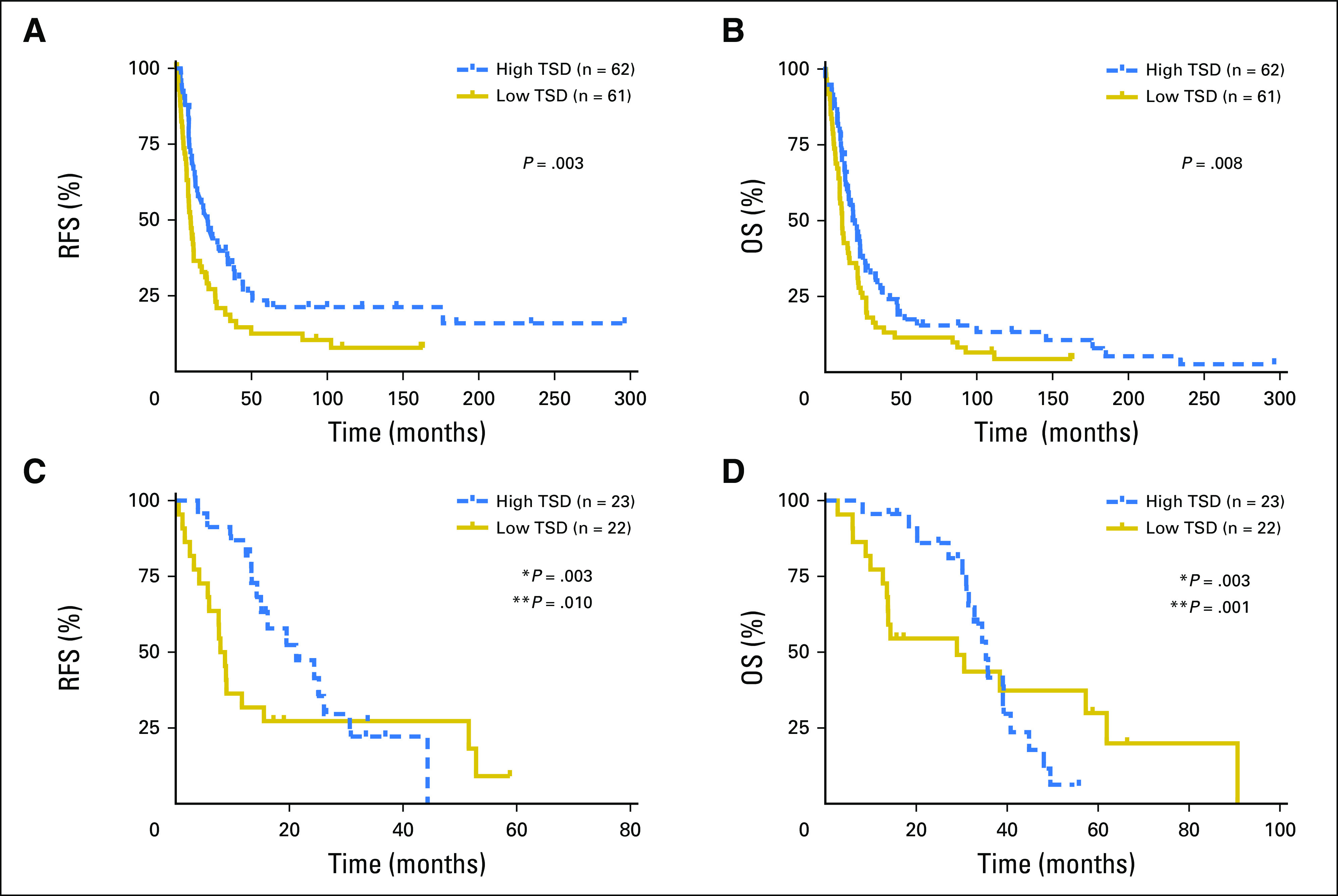Fig 2.

Recurrence-free survival (RFS) and overall survival (OS) stratified by tumor stromal density (TSD) in two independent cohorts. (A, B) Kaplan-Meier curves of (A) RFS and (B) OS for high versus low TSD in resected pancreatic adenocarcinoma (PDA) specimens from the Denmark patient cohort. Patients with a high versus low TSD had a median RFS of 21.1 versus 10.0 months (P = .003), and a median OS of 21.3 versus 11.7 months (P = .08). (C, D) Kaplan-Meier curves of RFS and OS for high versus low TSD in resected PDA specimens from the University of California, San Francisco, patient cohort. Patients with high TSD (> 0.6) had a median RFS of 14.6 months versus 8.7 months in those with low TSD (≤ 0.6). Patients with high TSD had median OS of 30.8 months versus 17.2 months in those with low TSD. TSD showed significant time-varying effects using a Cox model with time-varying coefficients. Patients with high TSD had a 97% reduction in risk of recurrence compared with those with low TSD at time zero (HR = 0.03 for high TSD; P = .003). However, the risk of recurrence increased over time (0.9% each day) in patients with high TSD (time-varying effect HR = 1.009 for high TSD; P = .010). Similarly, at time zero, patients with high TSD had a 97% reduction in risk of death compared with those with low TSD (time zero HR = 0.03 for high TSD; P = .003). The risk of death, however, increased over time (by 0.5% each day) in patients with high TSD (time-varying effect HR = 1.005 for high TSD; P = .001). *P = time zero; **P = time-varying effect..
